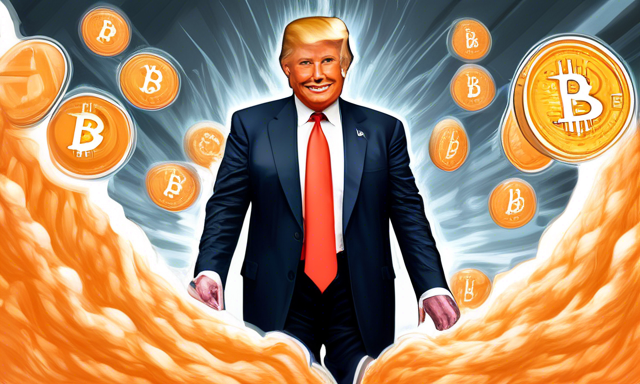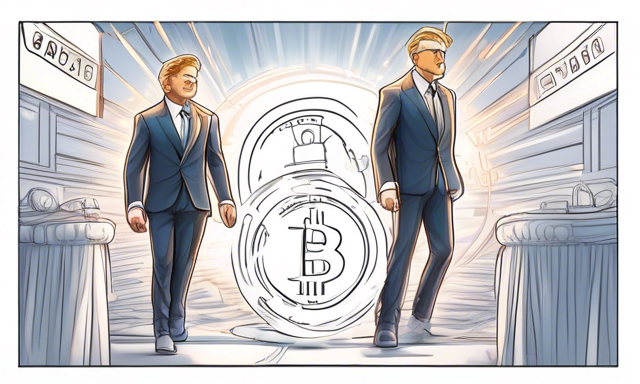Is the Future Bright for Tokenized Assets in Crypto?
Picture this: you’re sitting in a coffee shop, glancing through the latest news in the crypto world, and you stumble upon a headline about Japan’s SBI Digital Markets making waves with the Monetary Authority of Singapore (MAS). It sounds interesting, right? Well, it’s actually a significant shift in how we might view and trade assets in the digital realm. So, what does this mean for the crypto market? Let’s dive in!
Key Takeaways:
- SBI Digital Markets is pioneering new pilots for tokenized securities.
- Collaboration with major financial institutions is key in enhancing global liquidity.
- Introducing blockchain technology could revolutionize fund management in mutual funds.
- The movement towards public and private blockchain integration is gaining momentum.
- Institutional adoption is on the rise, reflecting growing confidence in digital assets.
The gist is that SBI Digital Markets is getting involved in Project Guardian. They’re working on something grand—tokenized securities that could change the game for global finance. The approach combines traditional finance with innovative tech, thereby improving liquidity and lowering costs. For the average investor, this is exciting stuff! Imagine buying a piece of a luxury wine collection, all through tokens—pretty cool, right?
What are Tokenized Securities Anyway?
Before we go any further, let’s clarify what tokenized securities even are. These are basically financial securities—a type of asset that can be traded—represented digitally on the blockchain. They can include anything from stocks to real estate and even those fancy wine bottles I mentioned earlier. The beauty of it all? Tokenized securities could potentially make transactions safer, faster, and cheaper!
One of the key projects under the Project Guardian umbrella involves developing a cross-border framework for tokenized assets. This initiative connects regulated digital asset exchanges across multiple regions. And the magic word here is liquidity. By boosting liquidity, investors can buy and sell assets more efficiently. Think of it this way: instead of cashing out your crypto just to ditch it for some traditional asset, you can seamlessly transact across platforms. Less hassle, more fun!
A Step Towards Enhanced Trading Efficiency
Another exciting detail is the Fixed Income pilot the team is rolling out. It aims to create an international network for tokenized asset-backed securities, covering both initial issuance and secondary trading. This could transform the landscape of trading as we understand it! And, wait for it—SBI plans to release structured notes backed by assets like luxury wines and eventually intellectual property and commodities. It’s pretty mind-blowing to think everyday people could invest in such diversified portfolios easily.
And here’s a cool twist—these securities will come in traditional and digital forms. That opens the door for a broader audience. You don’t have to be a tech whiz to invest; you can dip your toes in various markets depending on your comfort level.
Innovations in Fund Management
Now, let’s talk about the Asset and Wealth Management pilot with UBS Asset Management. They’re looking to evaluate a tokenized money market fund, powered by blockchain technology. It’s like a secret ingredient in a grandma’s recipe—once you add it in, everything works better! By integrating blockchain, they’re streamlining the subscription and redemption processes of the fund. This is a vital point because, in today’s fast-paced world, operational efficiency can’t be understated.
Highlighting the role of smart contracts here is essential. Thanks to Chainlink’s Cross-Chain Interoperability Protocol, the innovation could lead to cost reductions and operational hassle. I mean, think about it: fewer expenses in managing funds means better returns for investors. That’s what I call a win-win!
Merging Public and Private Blockchain Technologies
A significant takeaway from all this is MAS’s vision to encourage institutional adoption of digital assets. Under Project Guardian, both public and private blockchain technologies are being leveraged. This is a crucial point because while public blockchains like Bitcoin and Ethereum are decentralized and open to all, private ones allow for more controlled environments, ensuring compliance with financial regulations.
Major players like Standard Chartered and HSBC are also on this tokenization journey, exploring digital bond issuance and tokenized sustainable bonds. If these trends continue, we might see a shift where traditional finance meets digital innovation more harmoniously.
The Bigger Picture: Rising Institutional Trust
In a nutshell, the vibe from this initiative suggests there’s a growing confidence in the digital asset space. Institutions are slowly but surely warming up to the idea of tokenization as a viable option for investment and trading. More investments from established financial institutions like JP Morgan into both public and private blockchain solutions speak to that growing trust.
With all these developments, I think it’s important for investors to keep a close eye on these trends.
Practical Tips for Investors
- Stay Informed: Keep an eye on news regarding institutional interest in tokenized assets.
- Diversify: Consider looking into tokenized assets as a way to diversify your portfolio.
- Do Your Research on Security: Not all tokens are made alike. Research platforms and ensure they’re regulated.
- Engage in Community Discussions: Join forums or groups discussing tokenization. Sometimes insights from fellow crypto enthusiasts provide practical tips you wouldn’t find elsewhere!
Final Thoughts
So, is the future bright for tokenized assets in crypto? My gut says yes, and I believe the momentum we’re seeing is just the tip of the iceberg. As more institutional investments pour into this space, we might witness a fundamental shift in how we think about assets and trading.
Reflecting on all this, what you think? Are you ready to jump into the evolving world of tokenization, or are you still comparing traditional and digital assets? The future is exciting, no doubt about that!





 By
By
 By
By


 By
By
 By
By